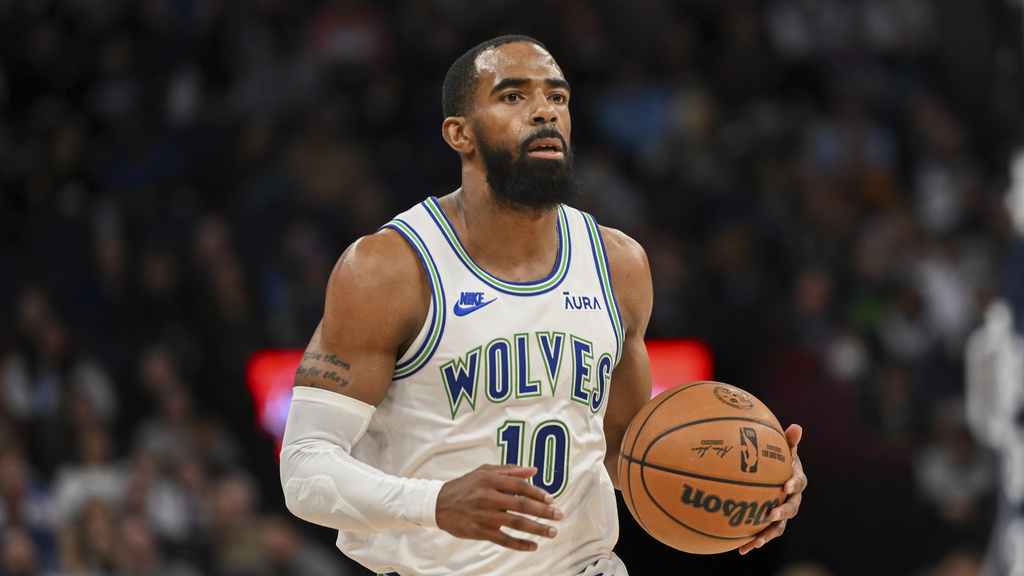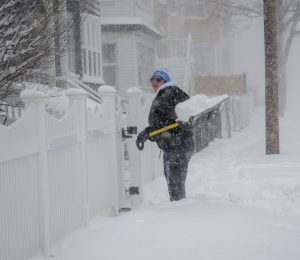
Conley’s Corner: The gameday routine
EDITOR’S NOTE: Mike Conley is one of the best sources of information in the NBA.
Entering his 17th NBA season, the 36-year-old Timberwolves point guard has seen it all and has the knowledge and willingness to explain what’s taken place and what’s to come with the media and, thus, the fans. That breadth of insight and analysis extends from the on-court Xs and Os to team dynamics and development.
Conley is just as good at explaining why two teammates came to blows in the middle of a timeout as he is on what the team needs to do to decode a switch-heavy defense.
So who better to sit down with twice a month to tackle different topics ranging from the Timberwolves to the league at large to, well, Mike Conley, than Conley himself.
This is the sixth installment of Conley’s Corner.
GAME-DAY ROUTINE
As a 36-year-old, Mike Conley is in the best physical condition of his career.
Wednesday’s game in Boston — which the floor general sat for rest after the Timberwolves flew in on the day of the game — marked his first absence since he was traded to Minnesota last February.
How has the veteran been so reliably available and consistent with his play when he is on the floor?
Look no further than the discipline displayed on his game-day routine.
Conley wakes up on game day, rolls out of bed and immediately stretches.
“It’s just like a whatever is hurting kind of thing,” he said.
He does not eat within the first two hours of his awakening — so much for breakfast being the most important meal of the day.
“I drink water. It’s just what I do,” Conley said. “For some reason, I feel like it’s a mini-fasting situation that might be helping me somehow, but I don’t know. But I’ve just always kind of done that.”
Eventually, it’s off to the practice facility. Upon his arrival Conley uses both the hot and cold tubs. Or, if he’s on the road and those amenities aren’t available, he’ll receive some other type of treatment.
Before shootaround begins, he warms up his mid-range jumpers before shooting 100 3-pointers. Conley has a competition with himself to see how many he can make, with the goal always being to best his previous day’s tally. The numbers are staggering.
“Eighty-ish would be good, 75,” Conley said.
Yeah, that works.
“One day I walked in and shot a 65,” he said.
The horror.
“And then I made eight threes (in the game) that same day,” he said.
All is well that ends well.
“So it doesn’t correlate at all,” Conley said. “It’s just about me setting my routines and trying to keep it.”
That routine does occasionally feature a few kinks as Conley’s life circumstances changed
Conley tries to squeeze in a pregame nap before heading back to the arena at night.
Those siestas range from 15 minutes to an hour.
“If I can,” he said. “If I’m on the road, I get sleep.”
But, at home, where he may have children rambling around the house, “it’s a little bit different.” So as much as athletes like their routines, he’s also learned to roll with the punches.
“I’ve gotten used to that being part of my routine of having it fluctuate a little bit and not freak out because it’s not the exact, exact same,” Conley said. “So I kind of give myself a little bit of a window between to try to sleep by 2:30, 3 o’clock to try to get some kind of shuteye.”
Once Conley arrives at the arena, it’s essentially a repeat of his shootaround schedule.
“Hot and cold tub, stretch, shoot my same routine on the court, work out,” Conley said.
That workout consists of making four floaters from five different spots on the floor. Those floaters are taken in various manners as he flexes his creativity and grows accustomed to the ball.
Then he goes back to the mid-range, where he makes five shots from five spots. He goes beyond the arc and makes three triples from five spots. Then he works on pick-and-rolls from the top of the floor and the sides of the arc before hitting a couple transition 3-pointers from the top of the floor and the sides of the arc. He ends his jump shooting by making another two in a row from five different spots before wrapping the workout by making 11 consecutive free throws. If he misses, he starts that count over. Before exiting the floor, he bounces one shot off the shot clock.
“Real simple,” Conley said.
Maybe in his world.
Conley said it took roughly a full season into his NBA career before he was able to establish a routine that worked for himself and what he needed to do for the team. He noted the routine has evolved over time.
“As my game developed, it changed a little bit,” Conley said. “So, in the beginning it might’ve been more one-dribble pull-ups, and mid-range elbow shots. Now, it’s deeper threes and just getting your legs under you, different spots on the court where I’m trying to be effective.”
After his workout, Conley leaves himself 10 minutes to roam around the court to potentially talk to an old face he hasn’t seen in a while while also signing autographs for fans before making his way back to the locker room for the team’s pregame meeting.
Conley noted when he was younger, he’d approach his pregame workouts with full vigor and break into a full sweat. Not anymore.
“I’ve got to balance that where I get a good pace to it, but don’t go too hard — you’ve only got a certain amount in the tank,” Conley said.
He now recognizes that body management is more important than reps. Watch Conley after a Timberwolves practice and you might see him shoot for three minutes before exiting the floor, while his teammates continue to take shot after shot after shot.
“I’m good taking care of my body, doing something else,” he said.
Even in the pregame layup line, Conley will shoot one layup and then head to halfcourt to stretch and activate his body. He’ll do that until there’s just four minutes left until game time.
“So I only shoot for two minutes, basically, right before the game,” he said. “While everyone else is warming up, my warmup is getting my body right. I’m not worried about my shots and stuff like that, so much. It’s strictly about the body.”
Twenty-four-year-old Mike Conley, the guard noted, would’ve raced to make 50 shots before the game started in an attempt to feel confident in where he was at with his shot before tipoff. Twelve years later, he knows better.
“It probably took, probably in the last five or six years where I started saying, ‘Hey, what’s going to keep me going is my body.’ I’ve worked so hard on my game to where I can’t forget how to shoot. I know I won’t forget overnight,” Conley said. “I might have some bad nights, some good nights, but that’s not your problem. Make sure you’re staying healthy and staying on the court. If you’re on the court, you’re going to make a difference. So I think that’s been when it kind of flipped for me.”
The results speak for themselves.
Past editions of Conley’s Corner:
Related Articles
Timberwolves trounce Portland to open softer stretch of schedule
Timberwolves’ Karl-Anthony Towns gives a nod to St. Paul City Council
Clutch-time play still a work in progress for Timberwolves guard Anthony Edwards
Late-game execution spoils Timberwolves’ exemplary effort in overtime loss to Boston
The Timberwolves finally did it: They rested a player


